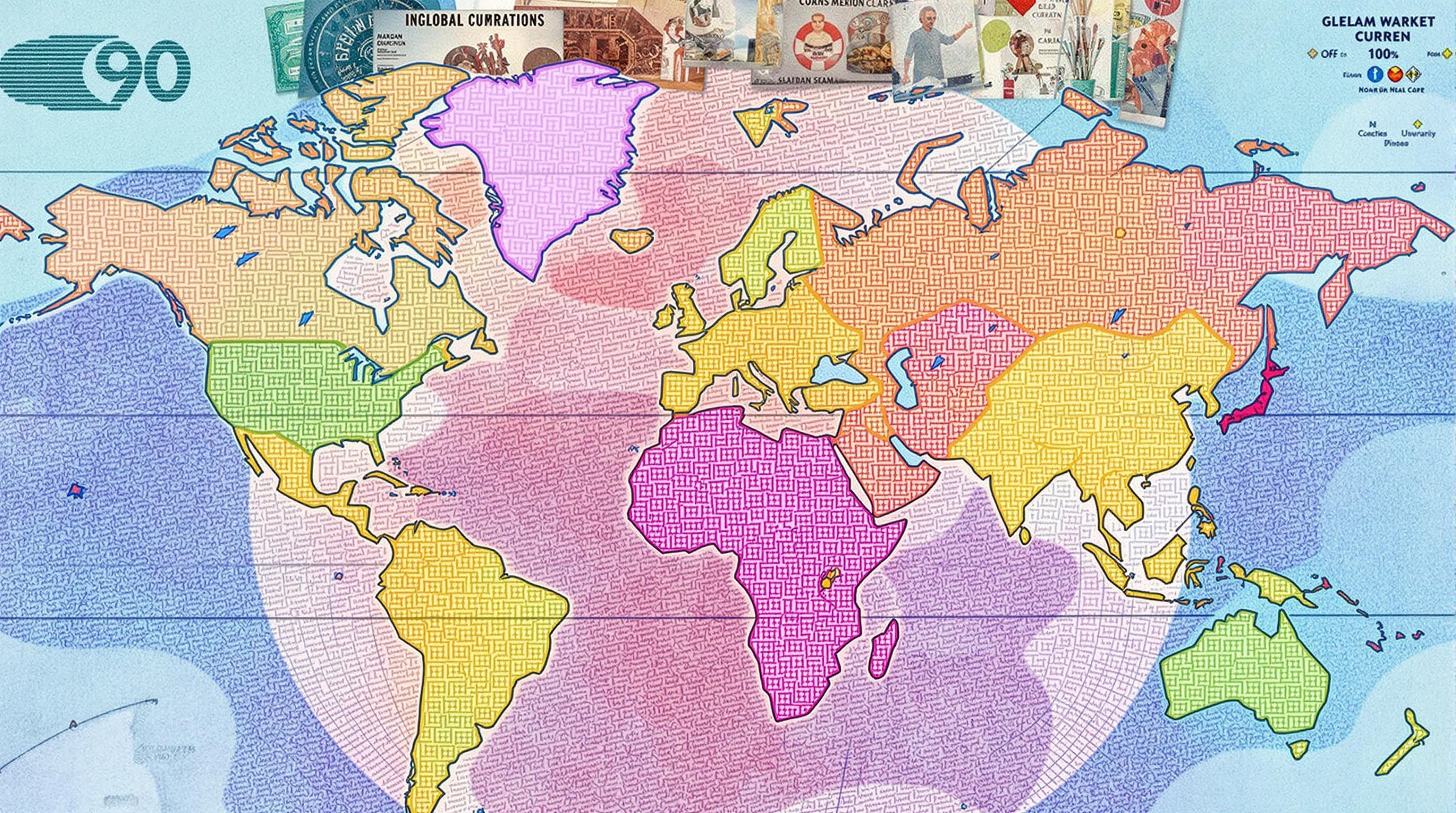Related Articles
- Unlocking Wealth: How Climate-Resilient Crops Are Shaping Financial Stability Amid Price Volatility
- Top 6 Emerging College Savings Solutions Unveiled Recently That Transform How Families Build Funds
- The surprising role of urban farming in creating economic buffers during volatile market cycles
- Unveiling the Quiet Impact of Climate Change on Municipal Bond Maturity Structures and Laddering Choices
- How Intergenerational Debt Shapes Families’ Ability to Fund Higher Education in Unseen Ways
- Top 6 Dynamic Laddering Tools from the Last Five Years Revolutionizing Interest Rate Risk Management
8 Surprising Global Currencies Offering Stealth Inflation Defense Beyond Conventional Markets
8 Surprising Global Currencies Offering Stealth Inflation Defense Beyond Conventional Markets
8 Surprising Global Currencies Offering Stealth Inflation Defense Beyond Conventional Markets
Inflation erodes the purchasing power of money, urging investors and savers to seek out currencies and assets that can offer protection against its stealthy advance. While traditional safe havens like the US dollar, Swiss franc, and gold get much attention, several lesser-known global currencies have demonstrated surprising resilience against inflationary pressures. These currencies often benefit from strong fiscal policies, commodity backing, or unique economic structures, making them valuable considerations for diversification in a world of rising inflation.
This article explores eight such currencies that have historically provided stealth inflation defense, including emerging market units and those from smaller nations. Each currency’s ability to retain value goes beyond conventional economic narratives, revealing sophisticated monetary strategies or natural resource wealth underpinning their stability. Understanding these nuances can help investors and international traders navigate currency risks more effectively.
By looking beyond mainstream monetary choices, we uncover opportunities for safeguarding wealth in subtle, less-obvious ways. The following sections detail each currency’s inflation-hedging characteristics, historical performance during inflationary periods, and key factors contributing to their resilience.
1. Norwegian Krone (NOK)
The Norwegian krone is supported by Norway's strong fiscal discipline and the wealth generated from its extensive petroleum sector. Managed through the Government Pension Fund Global, revenues from oil exports help stabilize the krone by backing Norway’s economy and public finances.
This sovereign wealth foundation allows the Norwegian central bank to maintain price stability with less volatility. The krone's performance during periods of global inflation has shown a surprising ability to maintain value relative to other European currencies.
Additionally, Norway’s robust current account surplus shields the krone from external shocks, making it a subtle yet effective currency defense against inflation. Its link to commodities, especially oil, creates natural inflation hedging as energy prices rise globally.
2. Singapore Dollar (SGD)
Singapore’s strategic regional trade hub status, coupled with prudent monetary policy, supports the Singapore dollar's resilience. The Monetary Authority of Singapore manages the currency by targeting an exchange rate band rather than interest rates, which helps moderate inflationary pressures through foreign exchange adjustments.
The SGD’s stability is further buoyed by Singapore’s strong fiscal position and diversified economy, reducing excessive volatility during global inflation surges. The city-state’s status as a financial center attracts steady capital inflows, supporting currency demand.
This unconventional approach to inflation control, focusing on exchange rate management, distinguishes the SGD’s inflation defense mechanism from typical inflation-hedging currencies reliant solely on interest rates or commodity backing.
3. Chilean Peso (CLP)
The Chilean peso’s inflation hedging is largely anchored by Chile’s significant copper exports, which constitute a major share of its GDP and foreign exchange revenue. When global inflation leads to rising commodity prices, the peso often benefits from increased export earnings.
Chile’s Central Bank employs active inflation targeting but the peso’s linkage to copper prices serves as a natural hedge against inflation imported through higher commodity costs. This relationship has historically helped the CLP perform better than other emerging market currencies during inflationary cycles.
The country’s track record of fiscal responsibility and monetary policy credibility underpins investor confidence, contributing to the Chilean peso's role as a subtle inflation defense tool.
4. Israeli Shekel (ILS)
Israel’s shekel benefits from a dynamic high-tech economy, strong foreign currency reserves, and prudent economic management. The Bank of Israel actively intervenes to smooth the shekel’s movements, preventing excessive appreciation or depreciation that could destabilize inflation.
Moreover, Israel's strong export sector and steady inflows of foreign investment bolster currency demand, enhancing its defense capabilities against inflation-induced depreciation. The country’s relatively low debt levels and stable political environment further enhance currency stability.
The shekel's combination of strong fundamentals and cautious policy interventions makes it a notable contender for inflation preservation beyond traditional safe-haven currencies.
5. Botswana Pula (BWP)
The Botswana pula stands out in Africa for its consistent inflation control, grounded in prudent fiscal policies and the country’s wealth in diamonds. Unlike many emerging market currencies, the Pula has displayed remarkable stability even in volatile economic environments.
Diamond mining exports contribute significantly to foreign exchange, supporting the pula and mitigating inflationary currency declines. Botswana’s sound governance and budget management have led to policy credibility that reassures investors and residents alike.
The currency’s relative insulation from regional instability and its commodity linkage make it a unique, albeit less well-known, tool for inflation risk mitigation.
6. Swiss Franc (CHF)
Though more widely known, the Swiss franc remains a relevant mention for stealth inflation defense due to its unique attributes. Switzerland’s political neutrality, financial secrecy laws, and strong institutional framework have historically made the CHF a top choice for capital preservation in turbulent times.
The franc’s role is enhanced by Switzerland’s low inflation rates and a banking sector focused on wealth management. While not entirely invisible, its consistent appreciation during global inflation episodes showcases its defensive properties.
Switzerland’s continually balanced fiscal approach provides further insurance against inflationary erosion, reaffirming the franc’s role beyond conventional safe-haven status.
7. United Arab Emirates Dirham (AED)
Pegged to the US dollar, the UAE dirham’s inflation protection derives partly from the US dollar’s global reserve status. However, the UAE also augments this with growing economic diversification and robust sovereign wealth funds derived from oil revenues.
The dirham benefits from the Emirates' status as an international trading hub and a safe political environment, making it a reliable currency during inflation spikes in neighboring economies. The government’s infrastructure investments and strategic fiscal management help to stabilize prices.
While its peg limits independent monetary policy, the dirham’s overall resilience and backing by substantial foreign reserves offer indirect inflation shielding beyond many pegged currencies.
8. New Zealand Dollar (NZD)
The New Zealand dollar gains inflation-defensive properties from the country's strong agricultural exports and proactive Reserve Bank policies. Dairy and meat exports underpin the NZD, correlating its strength with commodity price trends during inflationary periods.
The Reserve Bank of New Zealand is notable for operational independence and active inflation targeting, adjusting rates responsively to maintain currency value. These measures have helped the NZD outperform many peers when inflation threatens purchasing power.
Moreover, New Zealand’s political stability and transparent economic policies foster a trustworthy environment that supports the NZD’s role as a functional inflation hedge in global portfolios.
Sources:
International Monetary Fund (IMF) – Currency Stability Reports
World Bank – Commodity Price Data
Bank for International Settlements (BIS) – Exchange Rate and Inflation Analysis
Central Banks of Norway, Singapore, Chile, Israel, Botswana, Switzerland, UAE, and New Zealand – Official Monetary Policy Statements




